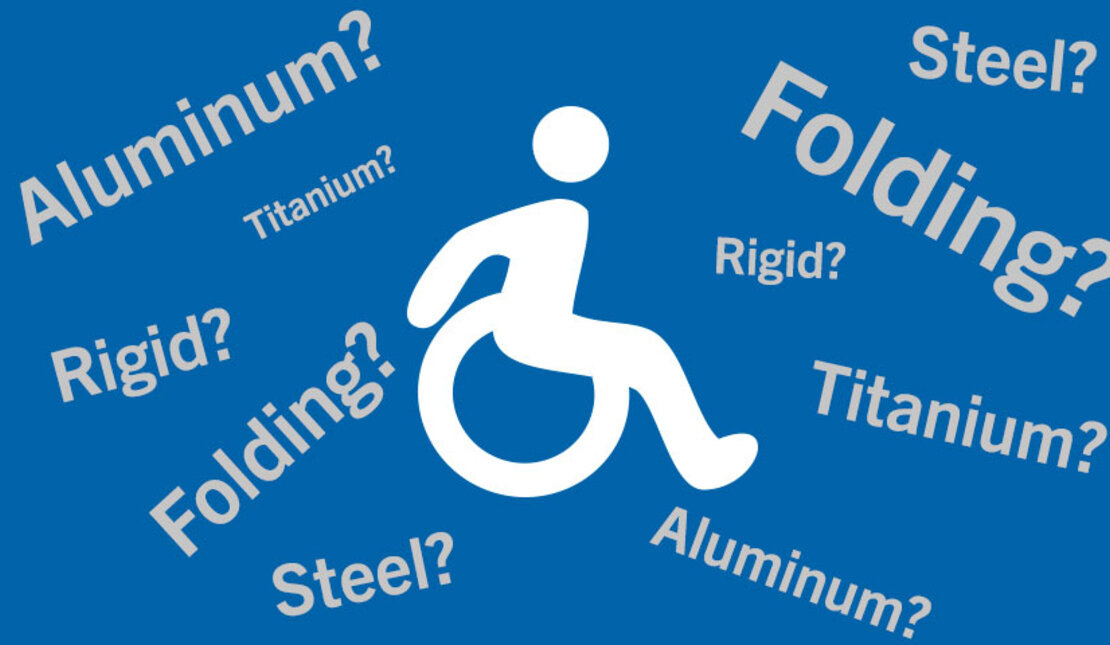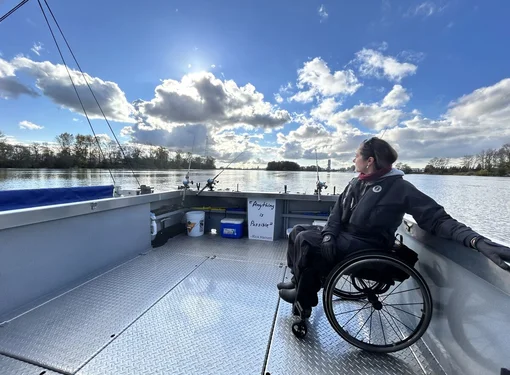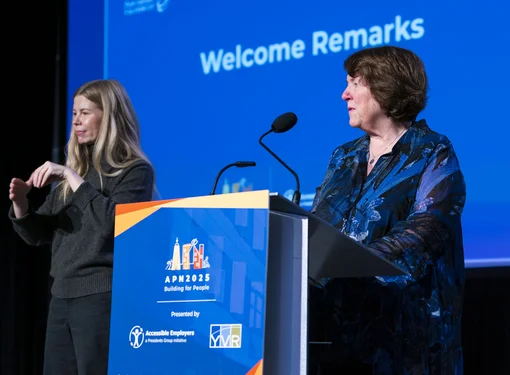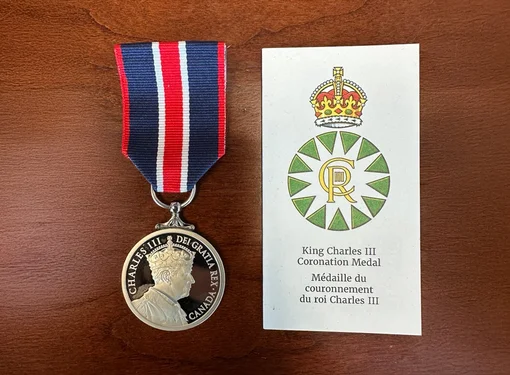Manual wheelchairs are not all created equal
(Disclaimer: This article is not meant to replace professional evaluations. We still recommend that you consult your therapist before choosing your wheelchair.)
Many people have seen manual wheelchairs before, even if they have no contact with people with disabilities – often as "rentals" at shopping malls, airports, and some stores.
But many do not realize that those with permanent disabilities might not use those kinds of wheelchairs.
Besides appearances, manual wheelchairs have different types and are made of different material.
Material – Steel vs. aluminum vs. titanium vs. carbon fibre
Material plays a strong role in wheelchair performance; it determines whether it is strong, cheap, or light. Unfortunately, no material has all three qualities at once.
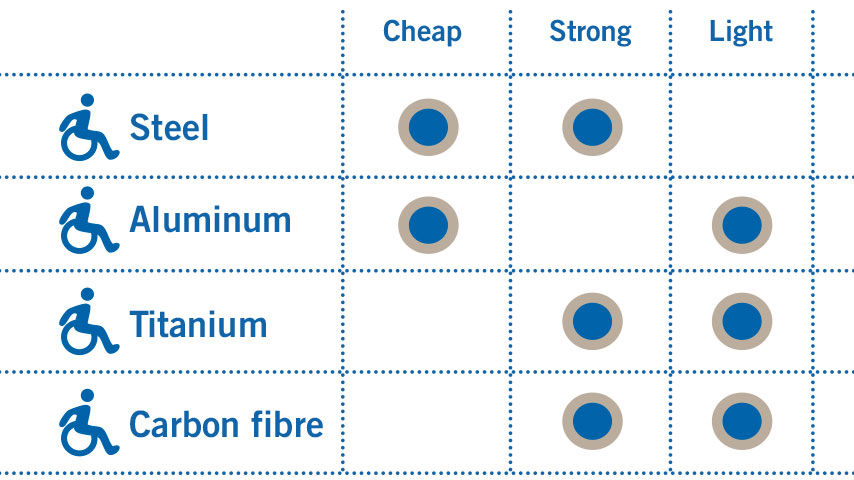 Above image: A table comparing steel, aluminum, titanium, and carbon fibre wheelchairs.
Above image: A table comparing steel, aluminum, titanium, and carbon fibre wheelchairs.
Steel – cheap and strong
Steel has long been found in "rental" wheelchairs. Today, it is usually not found in wheelchairs designed for self-propulsion or heavy use.
Places such as shopping malls, airports, and hospitals may use steel wheelchairs primarily due to cost. Steel is cheap but heavy – for outdoor use, its weight impacts its maneuverability, but it is often fine for short trips indoors.
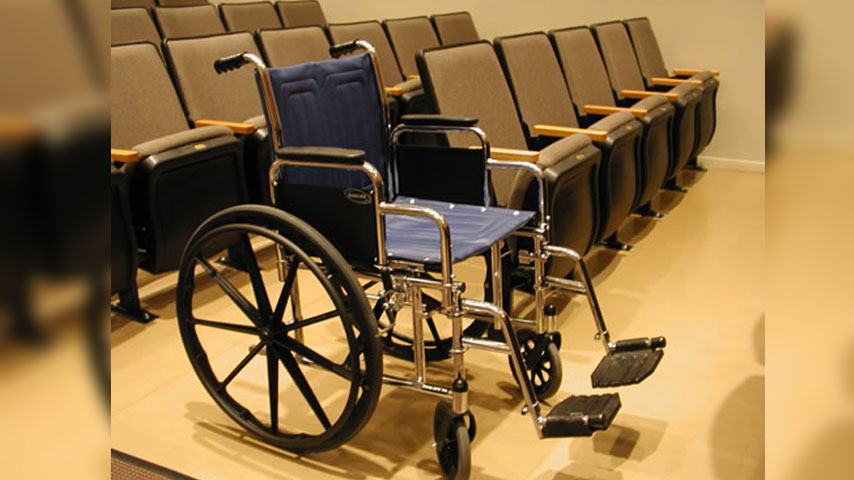 Above image: A "rental" wheelchair that likely uses steel.
Above image: A "rental" wheelchair that likely uses steel.
Steel wheelchairs were very common in times past but today, even "rentals" are often made of aluminum instead simply because it is a better option.
Aluminum – cheap and light
Manual wheelchairs made of aluminum are very common.
Even though aluminum is technically lighter than titanium, you also need more of it to get the same strength – thus making chairs heavier at the end.
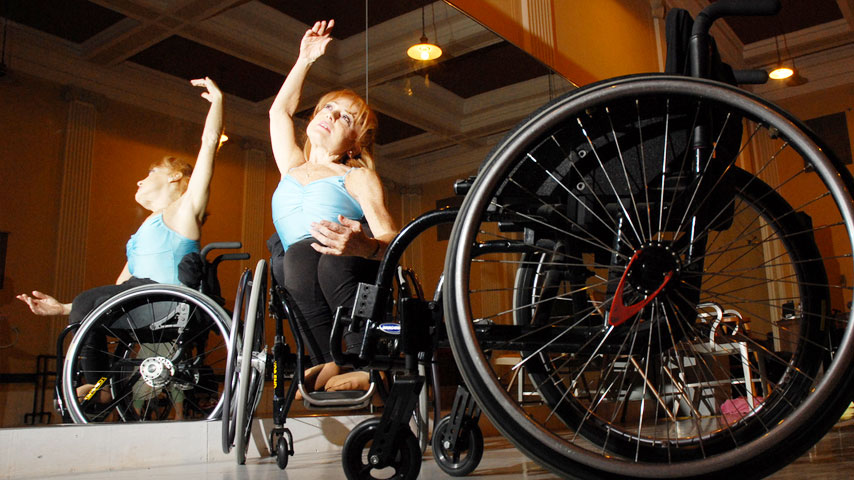 Above image: A woman with two aluminum wheelchairs. (Photo from Flickr.)
Above image: A woman with two aluminum wheelchairs. (Photo from Flickr.)
Aluminum is relatively cheaper but over time, it can also rust, get brittle and crack, which reduces its durability – something that recent advancements in welding have not solved, despite finding ways to improve aluminum's strength.
Titanium – strong and light
Unlike aluminum, titanium is built to last. It is very resistant to rust and does not easily get brittle and crack over time.
In fact, titanium can actually flex a bit much like bone, making it extremely good at reducing vibrations from the ground.
 Above image: A woman using a titanium wheelchair.
Above image: A woman using a titanium wheelchair.
Titanium is technically slightly heavier than aluminum but it is also much stronger, which means that less titanium needs to be used – thus making chairs lighter.
Because of titanium's strength, it is a difficult metal to work with and requires more specialized knowledge to weld, bend, and shape – making it a more expensive option.
Carbon fibre – strong and light
Carbon fibre wheelchairs are a fairly new innovation and by far the lightest option available.
However, customization is more difficult because items such as clamps and mounting hardware usually need to be special ordered or installed.
Since it is both the lightest and strongest option, it is also much more expensive.
Shape – Rigid vs. folding wheelchairs
Most "rentals" are folding wheelchairs. This means that they are able to fold to a very narrow shape and be stowed.
The obvious advantage is the portability, but the folding mechanism creates many moving parts for the chair, making it more vulnerable to breakdowns and loose parts. It also increases the chair's weight.
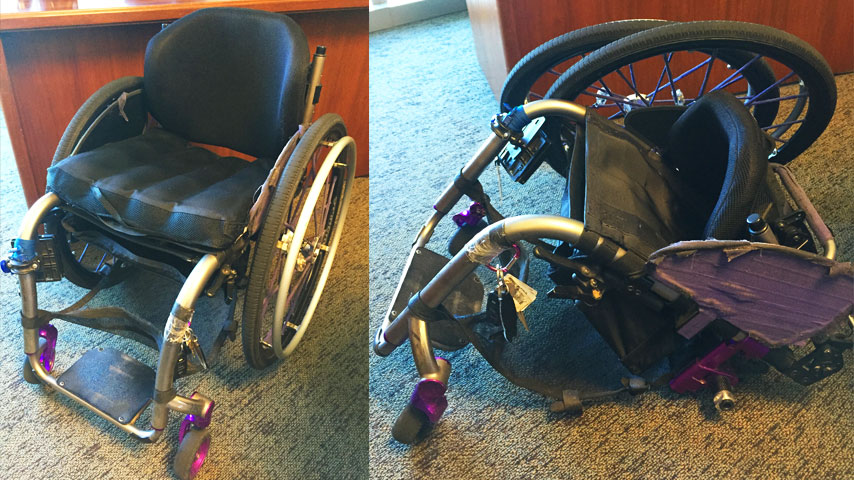 Above image: An example of a rigid wheelchair (left) and its appearance when folded (right).
Above image: An example of a rigid wheelchair (left) and its appearance when folded (right).
Rigid wheelchairs, unlike their name, can also fold. However, they fold differently, into a three-dimensional shape rather than a narrow shape. This makes it less portable.
The advantage to rigid chairs is that the lack of folding mechanisms results in a more streamlined design with fewer moving parts, which helps with reliability, weight, and performance. People with permanent disabilities often choose rigid chairs for these reasons.
Other considerations
For those with permanent disabilities, having a custom-fitted wheelchair is the best solution. Chairs that conform to one's body shape increases efficiency and reduces strain.
However, those who use wheelchairs part-time may not find it worthwhile to have such a complex solution and may opt for cheaper wheelchairs.
Wheelchair add-ons
 Above image: An example of carbon fiber wheels, which can help with wheelchair performance.
Above image: An example of carbon fiber wheels, which can help with wheelchair performance.
Manual wheelchairs can be made even more efficient through add-ons, particularly through the wheels.
Many opt for carbon fibre rear wheels. These are not only made of lighter material but also concentrate the weight of the wheel closer to the hub and axle, reducing pushing resistance.
For front caster wheels, there are some that use springs and shock absorbers to reduce friction. Since this area is close to the feet and legs, this can make a difference for those with spasms.
There are many manual wheelchair options available. It all depends on what the wheelchair user needs.
